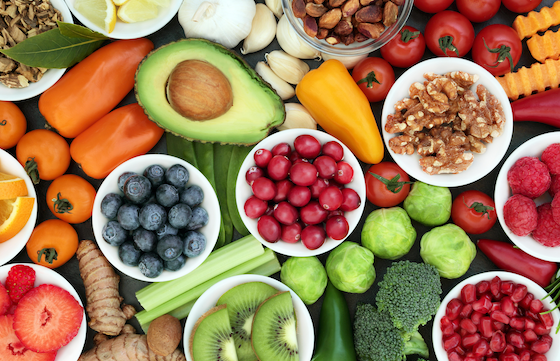
Food is essential to all living forms to grow and function well for the purpose they are created. The inside mechanism is rather simple as the food is taken, processed, and digested in many different stages, transferring the vitamins and minerals essential for the body and before they become waste. These internal and closed loop actions take place throughout cells. Humans have 37.2 trillion cells, processing the food to form healthy organs. Most of us are unaware of the fact that this is the first key for a healthy life.
Like humans, animals and plants are formed out of cells and the same principle applies. The world vibrates itself and there is a perfect balance and rhythm resonating. Like tuning into a radio station, you can hear something good, but you can’t observe what is behind the waves. We may reconsider the fact that whatever we consume as food – the vibrations of meat and plant – have harmony so that it tastes good and is nutritious to the body. This leads us to question what the perfect vibrations in food cells are, to give the body as much support as possible. So, the cells in humans, animals and plants have internal processes and mechanisms that involve molecular vibrations. This is the second key for a healthy life.
Once we are aware of the cell adjustment and harmony, we need to use this knowledge during the production, harvesting, storage, preparation and cooking of food. It is possible to trace these steps using new technology, including artificial intelligence, the internet of things and nanotechnology in a complete and perfect project manner. What is essential is, to control and influence all sub stages covering the food from seed to waste by using many engineering practices. I would like you to consider a little bit more what will result in a safer and healthier environment. This is the third key for a healthy life.
As foodservice consultants and FCSI members we should open a wider spectrum to serve our customers; opening new doors so that consumers reap the benefits of a better service and take care of their health as well. This also implies an education about how to obtain a safe and sound life span with the knowledge of proper feeding. This in turn may result in understanding that a healthier environment not only reduces health problems but also helps with waste control and energy/water consumption.
A new paradigm
We cook to improve the taste, texture, and safety of food, as well as to enhance its digestibility and nutritional availability. Various physical and chemical changes that occur during the cooking process, such as denaturation of proteins, starch gelatinization, and breakdown of complex molecules may be controlled by available technology.
Using this knowledge, the cooking methods, temperatures, and durations are determined based on the characteristics of the food being cooked – including its composition, structure, and desired outcome. Factors such as moisture content, protein structure, fat content, and the presence of enzymes dictate the appropriate cooking techniques.
How does considering these facts benefit cooking?
- Improved taste and texture enhancing the flavors and aromas of food, making it more enjoyable to eat.
- Improved safety as proper cooking destroys harmful bacteria, parasites, and other microorganisms that may be present in raw food, reducing the risk of foodborne illnesses.
- Increased digestibility as cooking breaks down complex molecules and structures in food, making them easier to digest and absorb nutrients.
- Nutrient changes may vary depending on factors such as cooking time, temperature, and the cooking method used.
To open a new call to action for healthier feeding, I propose to consider selecting plant-based food consumption as preference. Vegetables have diverse chemical compositions that contribute to their nutritional and sensory properties. These include:
- Carbohydrates: Vegetables contain varying amounts of carbohydrates, including simple sugars (such as glucose and fructose) and complex carbohydrates (such as starches and dietary fiber). Carbohydrates serve as a source of energy and play a role in the texture and structure of vegetables.
- Vitamins: Vegetables are rich in various vitamins, including vitamin C, vitamin A (in the form of beta-carotene), vitamin K, and various B vitamins. These vitamins contribute to various physiological functions, such as immune support, vision health, and metabolism.
- Minerals: Vegetables are a good source of minerals like potassium, magnesium, calcium, iron, and others. These minerals are essential for maintaining electrolyte balance, supporting bone health, and participating in enzymatic reactions.
- Phytochemicals: Vegetables are abundant in phytochemicals, which are biologically active compounds that contribute to their color, flavor, and potential health benefits. Examples include carotenoids (e.g., lycopene and beta-carotene), flavonoids, and polyphenols, which possess antioxidant and anti-inflammatory properties.
- Fiber: Dietary fiber, found in vegetables, plays a crucial role in digestive health and regular bowel movements. Fiber can be soluble (pectin for example) or insoluble (cellulose), and it helps promote satiety, regulates blood sugar levels, and supports gut health.
- Water: Vegetables typically have a high water content, which contributes to their hydration and helps maintain their crispness and juiciness.
Serdar Sağlamtunç FCSI is the CEO of DM Consulting
